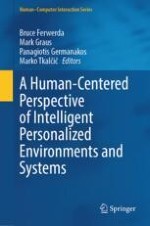2024 | OriginalPaper | Buchkapitel
Computational Methods to Infer Human Factors for Adaptation and Personalization Using Eye Tracking
verfasst von : Ben Steichen
Erschienen in: A Human-Centered Perspective of Intelligent Personalized Environments and Systems
Verlag: Springer Nature Switzerland
Aktivieren Sie unsere intelligente Suche, um passende Fachinhalte oder Patente zu finden.
Wählen Sie Textabschnitte aus um mit Künstlicher Intelligenz passenden Patente zu finden. powered by
Markieren Sie Textabschnitte, um KI-gestützt weitere passende Inhalte zu finden. powered by
